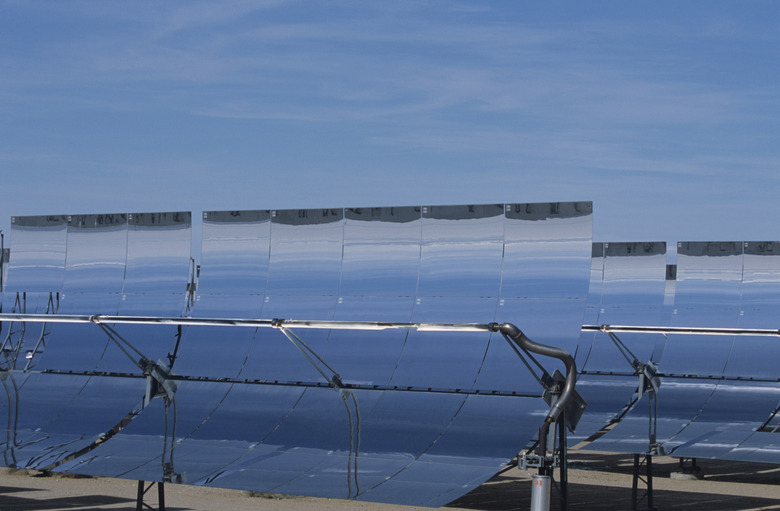How Does A Solar Power Generator Work?
A solar power generator uses the sun's energy to create electricity. Unlike a photoelectric panel, which converts sunlight directly into electrical current, a solar thermal generator uses the sun's heat to create electricity. This technology offers many of the advantages of traditional power generation without the carbon dioxide emissions that come from coal and natural gas power plants.
Electricity Generation
Electricity Generation
The heart of most power plants is a turbine generator. This device creates a current when it turns, transforming mechanical energy into electrical energy. Wind farms use large fan blades attached to turbine generators to catch the wind, converting the natural energy of moving air to electricity. Traditional power plants burn coal to heat water, and once the water comes to a boil, the resulting steam flows through pipes and turns the turbine generator. Solar thermal plants use a series of mirrors to collect and intensify the sun's rays to produce the necessary heat without the emissions created by burning fuel.
Trough Collectors
Trough Collectors
The key to any solar thermal plant is the series of solar collectors used to heat water. Typically, solar collectors are a series of large, trough-like mirrors laid out in rows with a series of pipes working their way through each line of collectors. The mirrors reflect the sun's energy in such a way that they concentrate the heat onto the water pipes, super-heating the water to around 300 degrees Celsius (572 degrees Fahrenheit). The water and steam flow through the pipes to the central turbine, producing electricity.
Concentrated Solar
Concentrated Solar
Another type of solar plant uses a central tower to collect and heat liquid instead of allowing the water to flow through a field of trough collectors. In this system, the mirrors are parabola-shaped, and all focus on the same point instead of each mirror focusing on a different length of pipe. This allows the targeted spot to become much hotter, creating more steam and allowing the system to drive a larger turbine to produce more electricity.
Thermal Storage
Thermal Storage
Central tower systems also allow the use of alternative materials for power generation. Molten salt is a mixture of salts designed to melt and flow at the extremely high temperatures provided by concentrated solar power systems. Once superheated, the salt flows through pipes connected to a traditional steam generator, heating the water and providing steam for the turbine. The advantage of this type of system is that molten salt retains heat much longer than water, keeping the system piping hot long after the sun goes down. This allows a molten salt generator to keep producing electricity at night, when most traditional solar generators fall dormant.
Cite This Article
MLA
Kazmeyer, Milton. "How Does A Solar Power Generator Work?" sciencing.com, https://www.sciencing.com/solar-power-generator-work-7344/. 24 April 2017.
APA
Kazmeyer, Milton. (2017, April 24). How Does A Solar Power Generator Work?. sciencing.com. Retrieved from https://www.sciencing.com/solar-power-generator-work-7344/
Chicago
Kazmeyer, Milton. How Does A Solar Power Generator Work? last modified March 24, 2022. https://www.sciencing.com/solar-power-generator-work-7344/
